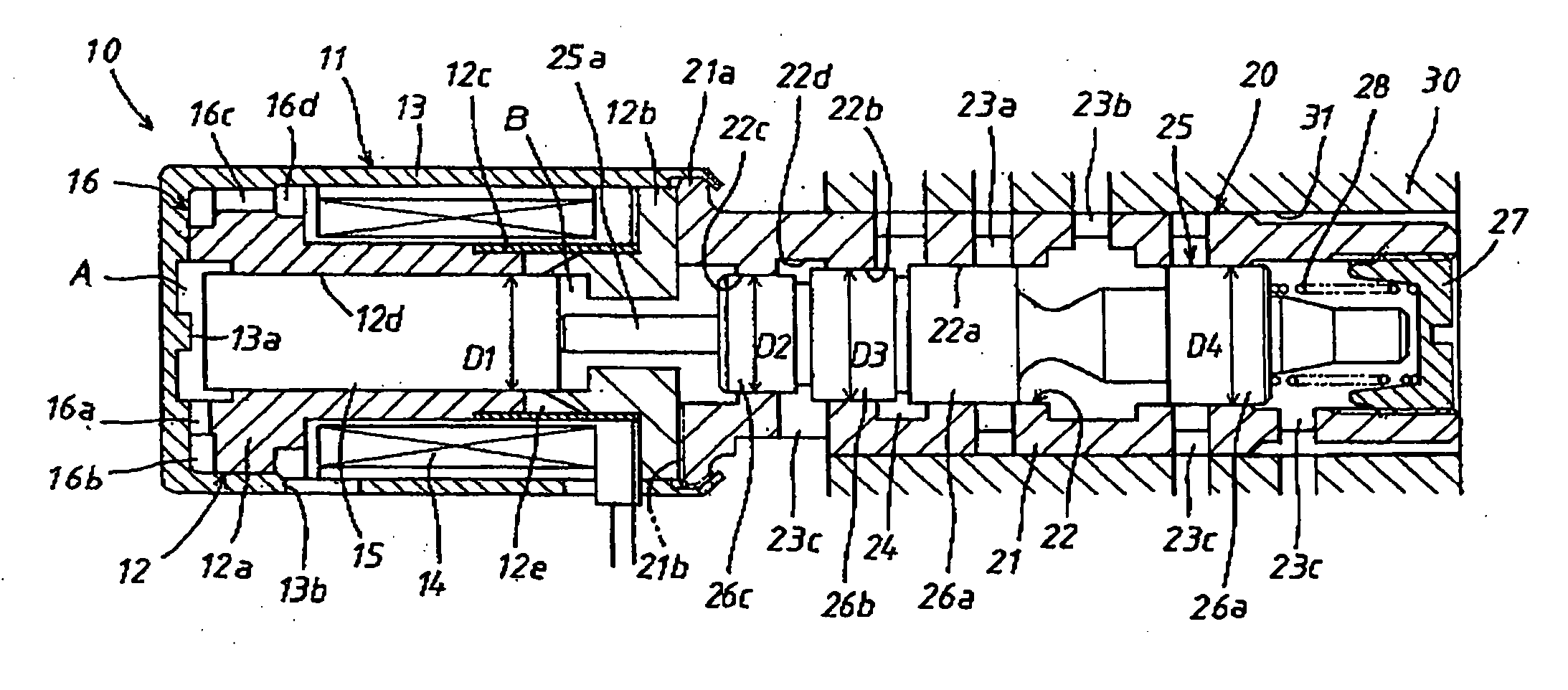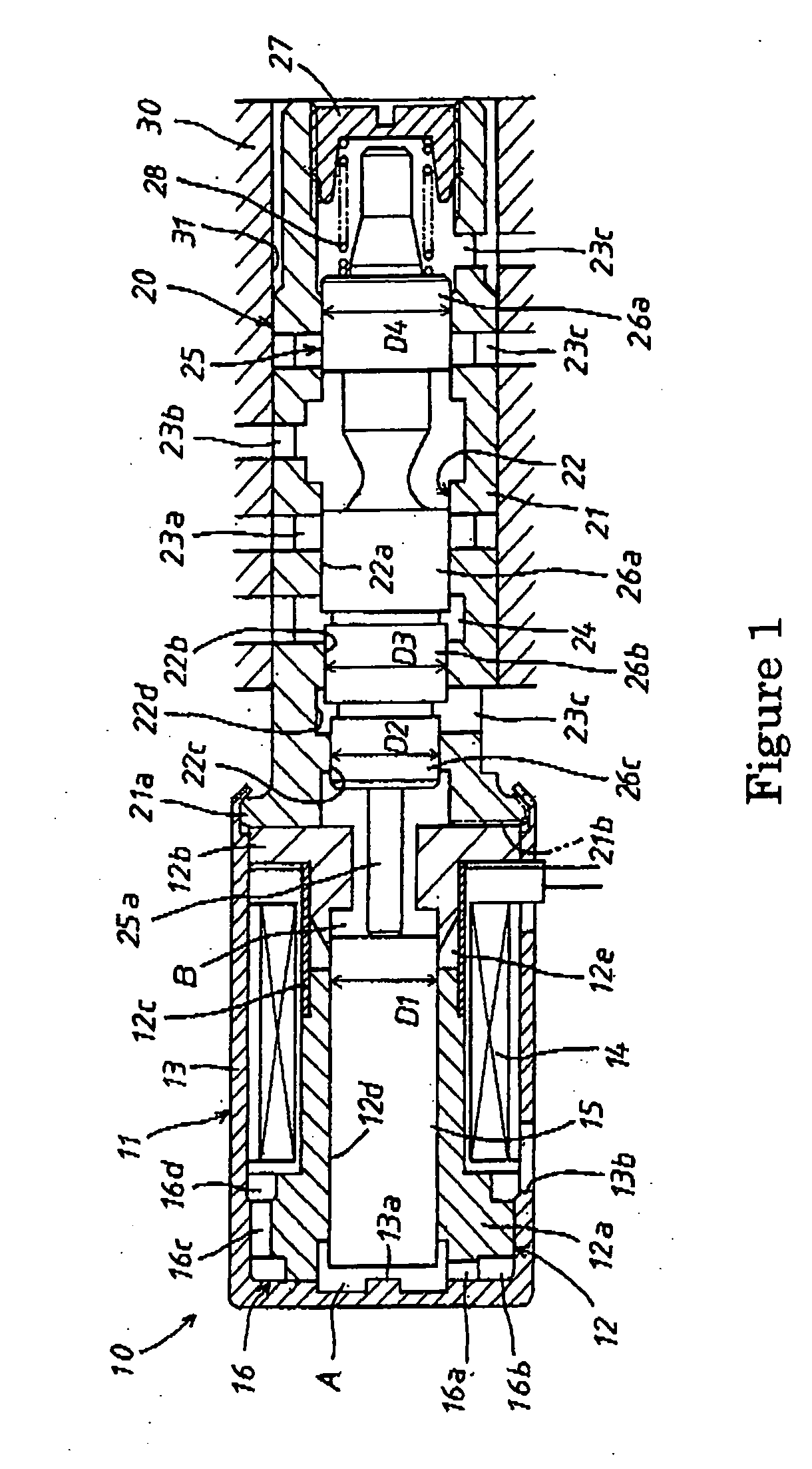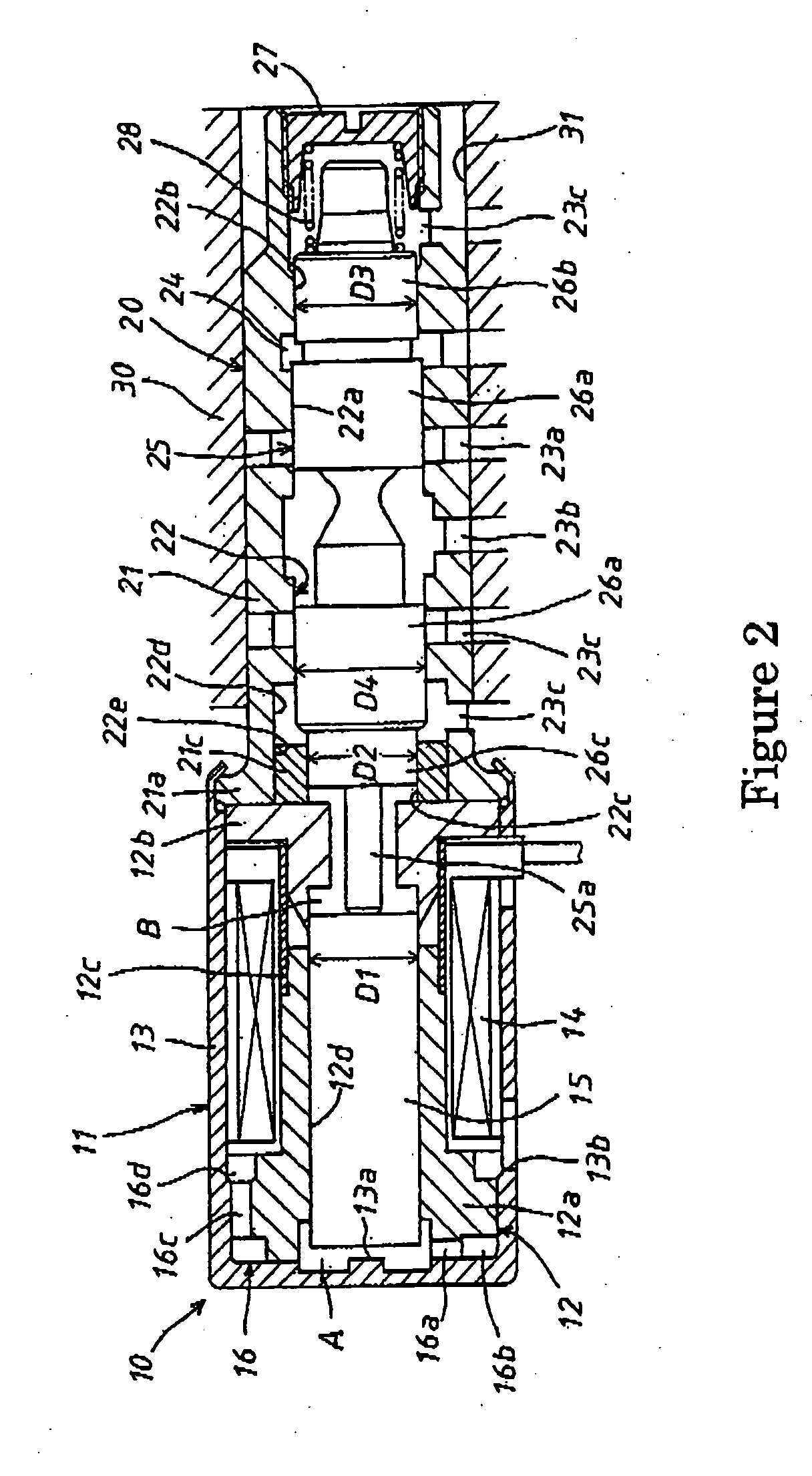Solenoid valve
a solenoid valve and valve body technology, applied in the direction of valve operating means/release devices, pressure relieving devices on sealing faces, transportation and packaging, etc., can solve the problems of stator core magnetization, plugging and locking, magnetic reluctance in the magnetic circuit,
- Summary
- Abstract
- Description
- Claims
- Application Information
AI Technical Summary
Benefits of technology
Problems solved by technology
Method used
Image
Examples
first embodiment
[0024] As shown in FIG. 1, in the solenoid valve of the first embodiment, the valve sleeve 21 is fixed in the valve body 30 with liquid tightness. Instead of the valve sleeve 21, the valve bore 22 and the ports 23a-23c may be formed in the valve body 30 itself.
[0025] During rest of the solenoid valve while the electromagnetic coil 14 is not energized, the spring 28 forces the plunger 15 and the spool 25 to contact each other and to set the plunger 15 on the central projection 13a of the inner bottom of the cover 13 as the retracted end position. This fully opens the opening between the supply port 23a and the control port 23b, and closes the opening between the control port 23b and the drain port 23c. In this situation, an amount of oil supplied from a pump, not shown, to a hydraulic equipment such as a clutch piston to be controlled, not shown, is supplied via the supply port 23a and the control port 23b. When the electromagnetic coil 14 is energized, the stator core 12 is magnetiz...
second embodiment
[0032] In the second embodiment, when the solenoid is inactive, the opening between the supply and the control ports 23a and 23b is closed, but the opening between the control and the drain ports 23b and 23c is fully opened, whereby the oil from the pump is not supplied to the hydraulic equipment but is instead drained through the drain port 23c. When the solenoid becomes active, the openings between the supply and the control ports 23a and 23b, and between the control and the drain ports 23b and 23c, are controlled according to the current flowing through the coil 14, and the oil from the pump is supplied to the hydraulic equipment through the control port 23b.
[0033] In the second embodiment, as in the first embodiment, the pressurized area of the plunger 15 is as large as the third land 26c of the spool 25, namely the diameters D1 and D2 are the same, so that the volume in the intermediate space B does not change even if the plunger 15 and the spool 25 move together. Therefore, e...
third embodiment
[0044] In the third embodiment, since the diameter D1 of the plunger 15 is the same as the diameter D3 of the second land 26b, the volume in the intermediate space B formed between each end of the plunger 15 and the second land 26b does not change, whereby the oil including the contaminants is not sucked into the intermediate space B. Therefore, even without a diaphragm or similar element the plunger 15 is prevented from locking due to contaminants lodged between the plunger 15 and the central bore 12d.
[0045] The volume in the tip space A formed between the bottom of the cover 13 and the end surface of the plunger 15 changes according to the slide of the plunger 15. However, since the tip space A connects to the outside via the aperture 13e of the cover 13 and the labyrinth inlet / outlet passage 18, the contaminants in the oil hardly reach the tip space A and most of them are eliminated during the opposite movement of the plunger 15. Iron powder is the contaminant which mainly makes...
PUM
 Login to View More
Login to View More Abstract
Description
Claims
Application Information
 Login to View More
Login to View More - R&D
- Intellectual Property
- Life Sciences
- Materials
- Tech Scout
- Unparalleled Data Quality
- Higher Quality Content
- 60% Fewer Hallucinations
Browse by: Latest US Patents, China's latest patents, Technical Efficacy Thesaurus, Application Domain, Technology Topic, Popular Technical Reports.
© 2025 PatSnap. All rights reserved.Legal|Privacy policy|Modern Slavery Act Transparency Statement|Sitemap|About US| Contact US: help@patsnap.com



